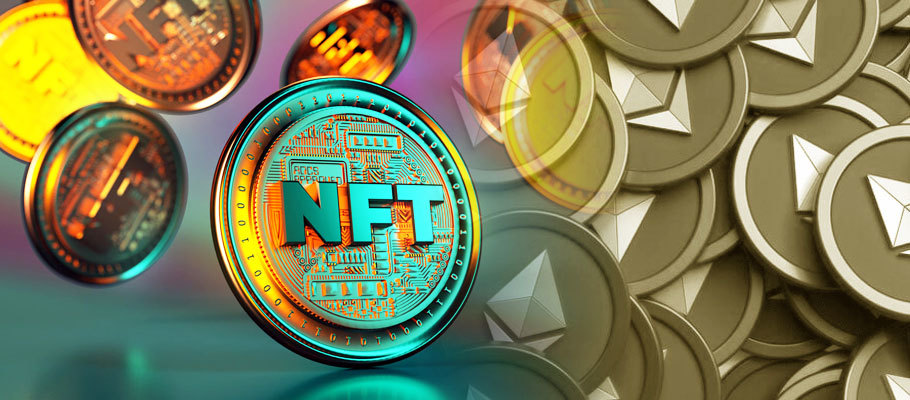
Published: March 1st, 2023
Ethereum’s transaction fee revenue is on the rise again after a boost in NFT trading activity on the world’s number two blockchain network.
New figures from on-chain analytics firm Glassnode show that the median cost of a ‘gas fee’ (Ethereum's name for the transaction fees it levies to manage network congestion) have been in the range of 10-20 gwei for the past nine months.
In February 2023 the median rose sharply to 38 gwei, a notable rise that’s even higher than peaks seen in the wake of ‘bank-run’ events like the collapse of FTX in November 2022 and Binance’s troubled week in mid-December 2022 (36 gwei and 24 gwei respectively).
‘Since gas fee demand has risen incrementally for most of February, it’s likely that we are witnessing the early stages of a return to form for Ethereum network activity,’ wrote Glassnode analysts in a report issued Monday.
Gas fees rise and fall in tandem with network demand, echoing the surge pricing used by services like Uber. It practical terms it means that transaction costs rise when more users try and add transactions to the next Ethereum block. In February 2023, rising user activity appears to be driven by trading on Ethereum’s NFT market.
The gas fees levied against Ethereum NFT transactions have spiked by 96 per cent for two consecutive months, Glassnode says, nearing levels last seen at the peaks of the 2021-2022 NFT boom. Much of that activity looks to be happening on the upstart Blur marketplace, which last week overtook leader OpenSea in terms of overall NFT trading volume.
‘The arrival of Blur and its surging popularity has increased demand for Ethereum block space, leading to higher fees for validators and more ETH being burnt,’ added Glassnode.
An NFT is a blockchain token that indicates proof of ownership for another asset, typically a digital product like a unique online profile picture, and sometimes an artwork, collectible, or video game item. The NFT market reached USD 25 billion in trading volume in 2022, adding roughly USD 20 billion more for the year.
Other factors adding to the rise in NFT activity this past month include the launch of new collections by industry leaders like Yuga Labs, which unveiled its Dookey Dash game in February and a new iteration of the popular Doodles collection.
Glassnode notes that despite these signs of NFT market resurgence, the Ethereum network adoption rate is still low. The volume of new addresses being created is still 40 per cent under the peak seen a year ago. The take-away for crypto traders is that that February’s uptick in NFT activity is being driven by current NFT holders, rather than a sudden influx of new ones.
And fee income growth across the Ethereum ecosystem remains uneven. Glassnode says that the heating-up competition between Blur and OpenSea is tightening the flow of funding available to new NFT projects, which in the past would have depended on secondary royalties from Ethereum for revenue.
While all of the big name Ethereum NFT collections saw their valuations crater during last year’s wider crypto market crash, the CryptoPunks collection bucked the broader trend. Following two multi-million-dollar sales in July 2022, the minimum or ‘floor’ price for one of the project’s NFTs rose substantially over a one-week period.
The floor price for CryptoPunks on secondary marketplaces jumped to above USD 100,000 on 18th July 2022, the first time it had reached such a high since the crypto crash began in mid-May 2022. Data from NFT Price Floor showed the floor price for CryptoPunks at 84.84 ETH, or about USD 113,000.
That meant the entry-level price for CryptoPunks leapt by more than 30 per cent in a week.
The rising value of Ethereum, up 27 per cent over the past seven days, was part of the story. However, when measured against ETH, the CryptoPunks floor beat Ether's rise by nearly 26 per cent over the previous 30 days.
It didn’t set off a market-wide uptrend for high-value NFTs, however. A-list collection Bored Ape Yacht Club, for example, saw its ETH floor price fall by five per cent the same week.
CryptoPunks has been one of the most successful projects in the NFT space. Parent developer Larva Labs launched the collection in 2017, first giving away its NFTs for free to stoke interest. Owning a CryptoPunks NFT has since become a status symbol for crypto enthusiasts and celebrities alike. To date, the collection has posted more than USD two billion in trading volume, including a record purchase worth USD 23 million recorded in March 2022.
The two biggest players in the NFT space have been Larva Labs and Yuga Labs. Both companies are known for treating their collections, and NFT traders, very differently. Larva was one of the first to get behind the Ethereum NFT market, though the project’s leaders seemed content to ride the wave when the overall crypto market went into overdrive in 2021.
Yuga Labs saw the crypto surge as a signal that change was afoot and changed its model, becoming similar to a members-only club and adding exclusivity and cachet to its NFT products.
That move, and the celebrity endorsements that came rolling in as a result, changed the game. Perhaps seeing that it had made a strategic error, Larva sold its key IP to Yuga. Now both companies find themselves once again riding the whims of crypto market volatility.
In March of 2022, Larva Labs announced it was selling the IP for CyptoPunks to Yuga Labs. News of the sale sent prices for CryptoPunks NFTs through the roof.
Analysts said at the time that NFT buyers were looking to ‘flip’ their CryptoPunks purchases and gain a windfall on the secondary market.